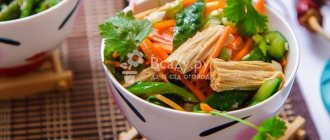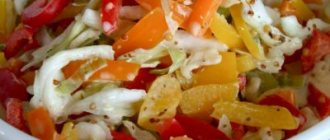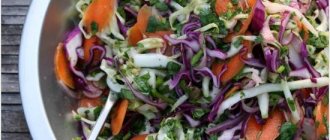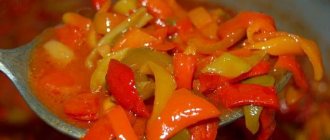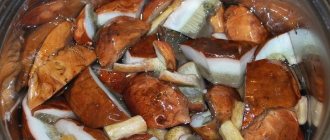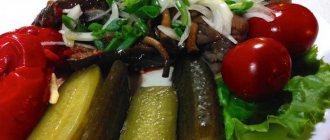At one time I constantly bought pickled soy asparagus at the market. Korean (or maybe Vietnamese or Chinese) girls were selling incredibly delicious soybean snacks! I apologize in advance, at that time I did not distinguish Asians at all, so I indicate such a difference in nationality. Now I would be much smarter, I would definitely find out where this wonderful recipe came from and where these lovely sellers came from. And I always wanted to unravel the secret of how to cook soy asparagus fuzhu.
The Asian girls left, they stopped selling pickled asparagus, and I completely forgot about this dish.
Korean asparagus and carrot salad recipe
- Cooking time required: 3-5 hours for the asparagus to swell.
- Kitchen utensils and appliances: 2 bowls, cutting board, spoon, knife, sieve, frying pan, garlic grater, Korean carrot grater, stove.
List of ingredients
| Soy dried asparagus. | 250 g |
| Onion | 1 PC. |
| Garlic | 5 cloves |
| Vinegar 9% or acetic acid | 1 tbsp. l. or 0.5 tbsp. l. |
| Carrot | 1 PC. |
| Coriander | 1 tsp. |
| Vegetable oil | 3-4 tbsp. l. |
| Black pepper | 1/3 tsp. |
| Salt | taste |
| Red pepper | 1/3 tsp. |
Step by step recipe
- To begin, soak 250 g of soy asparagus in cold water for 3-5 hours. Taste it periodically; it should remain slightly rubbery.
- After a while, rinse it under cold water. The easiest way to do this is with a sieve.
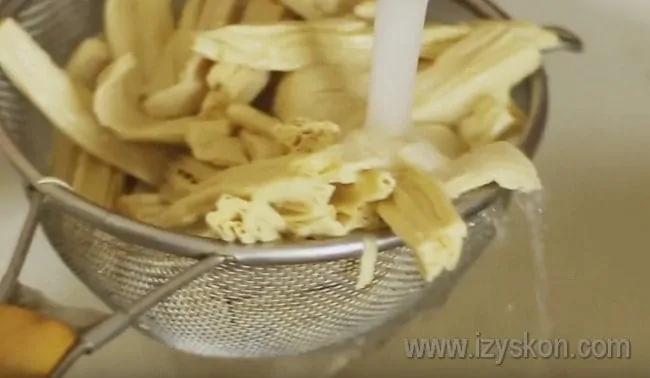
- First cut the softened asparagus in half, and then each piece into thin slices.

- Peel 1 onion and cut it into small squares.

- Wash under running water and peel 1 carrot. We grate it to prepare Korean carrots.

- Pour 3-4 tbsp into the pan. l. vegetable oil and set to heat on fire.
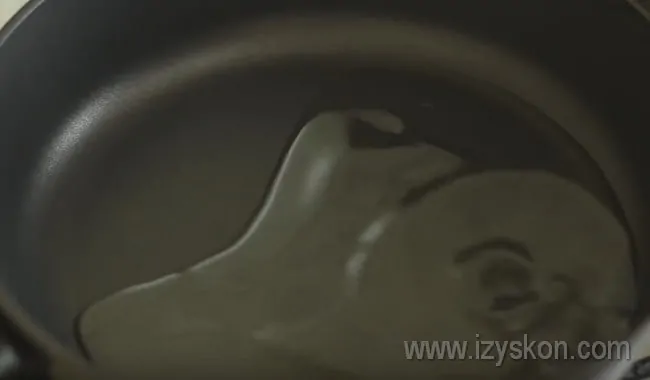
- As soon as it warms up, add chopped onion.
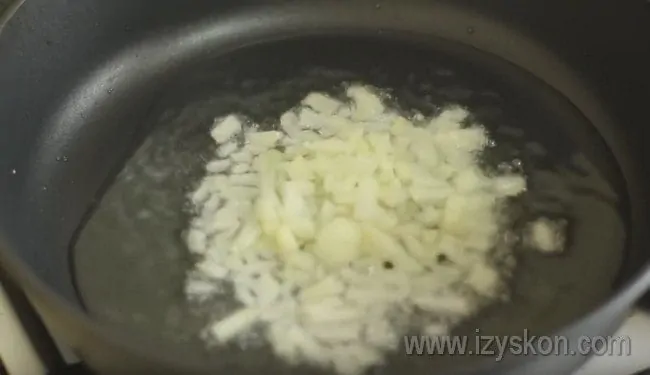
- We continue to fry it until a light golden hue appears.
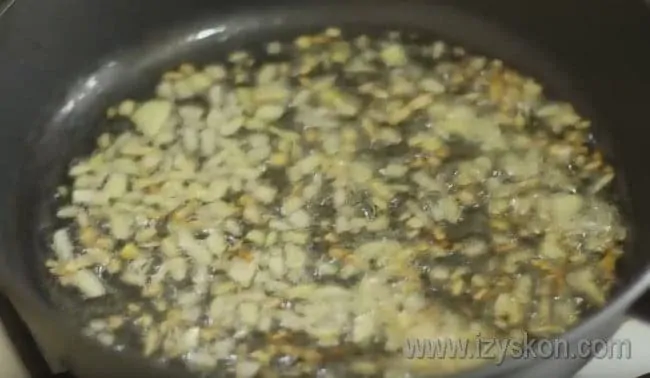
- Combine chopped asparagus, fried onions and remaining oil after frying in a convenient bowl.
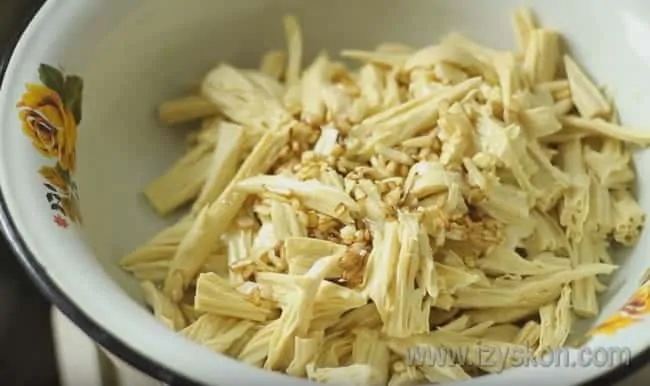
- Place the grated carrots in a bowl.
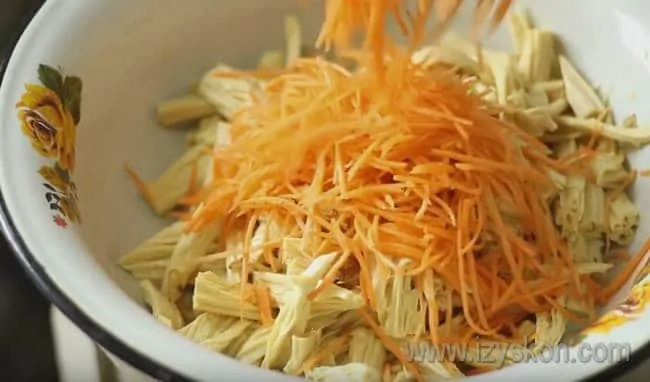
- Add spices: 1 tsp. coriander and 1/3 tsp. ground red and black pepper.
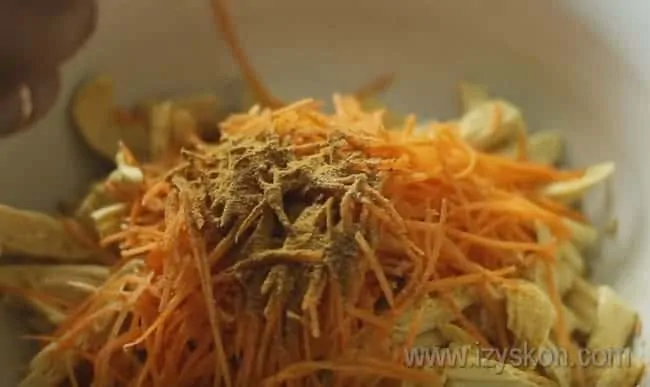
- We fill everything with 1/2 tbsp. l. acetic acid or 1 tbsp. l. regular 9% vinegar.
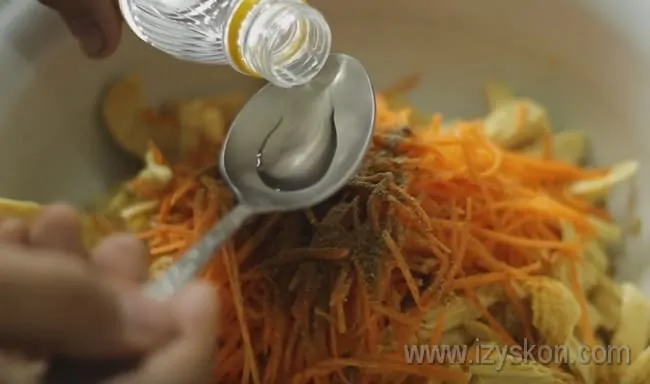
- Add salt to taste.

- Peel 5 cloves of garlic and grate them or pass them through a garlic press.

- Mix everything thoroughly and let it brew for a while. Place the finished dish on a serving plate!
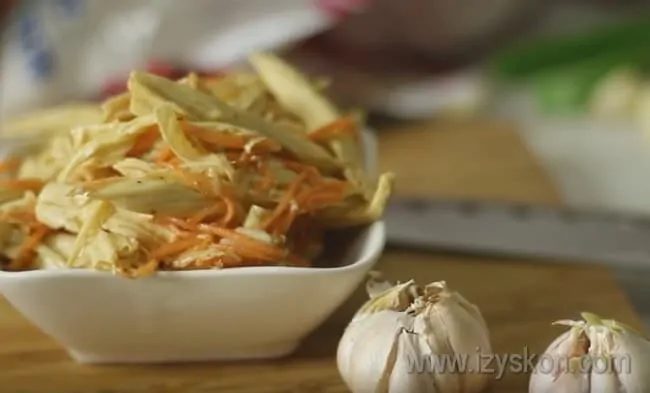
Asparagus during pregnancy
As mentioned earlier, asparagus is not prohibited during pregnancy, often it is even specially introduced into the diet of a pregnant woman, this is due to the fact that the delicacy contains a large amount of folic acid, and this, in turn, has a beneficial effect on the process of fetal formation.
Can pregnant women eat asparagus? Yes, you can, but everything is good in moderation, especially during pregnancy, so this product must be used carefully and in moderation.
Asparagus during pregnancy has a positive effect on both the expectant mother and her baby, because the product is rich in vitamins and minerals, which a woman so often lacks during pregnancy.
To enjoy asparagus, look for those that are bright green in color. You will love the crunchy taste of fresh vegetables.
Here are the nutritional benefits of eating asparagus during pregnancy, making them ideal for a pregnancy diet:
- Asparagus is rich in vitamins and vitamin minerals. About 100 g of asparagus contains 24 calories.
- It is a rich source of vitamin B9, B complex, K, C and A. Vitamin B9 helps prevent birth defects like cleft bafida in your pregnancy. You can get your daily dose of vitamins with regular consumption of asparagus.
- Asparagus is considered a great addition to your pregnancy diet for folic acid. Folic acid or folic acid helps your fetus develop properly and reduces the chance of birth defects.
- The calcium contained in asparagus helps in the development of teeth and bones of the growing baby inside you.
- The vegetable is rich in fiber, which combats laurel problems such as constipation.
- Asparagus is known to promote fertility. This can be a very good option for those trying to get pregnant.
- The diuretic effect of asparagus detoxifies your body. It eliminates all toxins from the body and cleanses the stomach system. This improves digestion and metabolism.
Asparagine (a natural amino acid, a protein component) contained in the plant dilates blood vessels, thereby reducing blood pressure and protecting the heart from overload. The same substance can bind toxic ammonia formed in the body.
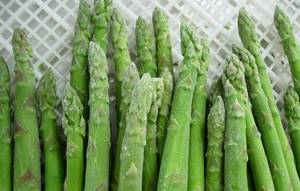
Folic acid, which is also abundant in asparagus, is needed by both pregnant and nursing mothers. It reduces the risk of birth defects in a child, but, unfortunately, is almost not produced by the body. The vast majority of women suffer from folic acid deficiency. Doctors are often forced to prescribe this vitamin in tablets to expectant mothers.
A large amount of coarse fiber stimulates digestion and helps remove toxins. Magnesium relieves fatigue. B vitamins are beneficial for the liver of matter and the proper formation of the fetus. Vitamin A and carotene have a positive effect on vision, and the diuretic properties of the plant are useful for combating edema.
Like any food, asparagus is good in moderation. If you eat too much of this delicacy, you may experience:
- flatulence and belching from the accumulation of gases in the intestines, especially if there are problems with the gastrointestinal tract;
- unpleasant odor from urine and body, arising from sulfur compounds in sprouts (however, this smell can only be distinguished by people with a keen sense of smell);
- allergic reactions due to intolerance to this and other onion crops (onions, garlic);
- problems with the urinary and reproductive system.
Doctors recommend carefully consuming asparagus for gout and rheumatism, gastrointestinal and kidney diseases, and diabetes.
Folic acid, which is also abundant in asparagus, is needed by both pregnant and nursing mothers. It reduces the risk of birth defects in a child, but, unfortunately, is almost not produced by the body. The vast majority of women suffer from folic acid deficiency. Doctors are often forced to prescribe this vitamin in tablets to expectant mothers.
If you want to be healthy during pregnancy, eat fruits and vegetables. They will relieve you of constipation. Will protect you from colds. Both you and your unborn baby need them. Strengthen his immunity.
They will help shape his body. And for the expectant mother, this is a simple remedy, a significant help in avoiding complications during childbirth. How we love to avoid simple, time-tested recipes.
Of course, not any specific fruit is a panacea for all ills. Various fruits and vegetables. Fruits and vegetables from where you live. Your usual fruits and vegetables. The despicable domestic carrots are said to have more vitamins than the aristocratic carrots from France. I admit that it is French carrots that will help a French woman during pregnancy. But we will only take asparagus from France.
Asparagus has long been known for its healing properties. It is also a diuretic and is useful for kidney and heart diseases. Asparagus lowers blood pressure, asparagus relieves fatigue. Asparagus is superior in nutritional value to most vegetables. Green asparagus is coarser than white, but green also contains more vitamins. Cooking asparagus is not difficult, which is also important.
Asparagus contains folic acid, vitamin B9, which is essential for a pregnant woman. The folate content of this vegetable is higher than most other vegetables. Doctors recommend folic acid during pregnancy. And the same can be said against asparagus; if you haven’t eaten it yet, then it’s not time to start.
If you've already eaten it, good luck. Everything is good in moderation. Even asparagus, even the queen of vegetables. Asparagus in Korean is a completely different matter. This is not asparagus. Semi-finished product from soy milk. Essentially a fake. Although with its own nutritional and medicinal advantages.
As a healthy and tasty vegetable, asparagus became known back in Ancient Greece. It began to be grown as a cultivated plant in Ancient Rome.
Then Europeans became interested in it, and in the pre-revolutionary period it was popular in our country. But then it was undeservedly forgotten, because it is practically the earliest vegetable that appears in the spring on our plots.
The beneficial properties of asparagus have been tested over time. But how is it useful during pregnancy?
The combination of substances and elements (zinc, phosphorus, iron, magnesium) found in this vegetable significantly influences the formation and strengthening of bones (including teeth), as well as connective tissues, and the process of blood formation. This has a beneficial effect on the formation of the fetus.
Having a mild diuretic effect, asparagus can be an assistant in the fight against edema.
It contains a significant content of potassium salts and asparagus acid, which improve kidney function in general. In addition, they remove waste, toxins and relieve inflammatory processes.
The calming effect of asparagus is due to its high magnesium content.
The presence of a large amount of coarse fiber in asparagus normalizes digestion.
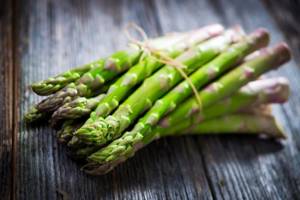
The content of provitamin A helps cleanse the body, improve vision and skin condition, which is important during pregnancy.
Benefit
In addition to all the above beneficial properties of asparagus during pregnancy, a decoction of its roots can be used as a pain reliever.
Its freshly squeezed juice has a cleansing and softening effect on the skin.
Asparagus strengthens hair, nails and has a general rejuvenating effect on the body. This low-calorie vegetable is perfect for dietary nutrition.
Asparagus cannot cause any harm to a woman’s body or fetus during pregnancy if consumed in moderation and following all recommendations for use.
Asparagus, like all healthy foods, has positive qualities, but it has several restrictions on its use:
- it can cause an allergic reaction, including hives. Therefore, before consuming, you need to check whether it is an allergen for you;
- You should not eat it during an exacerbation of diseases of the stomach and intestines. In general, people with such diseases need to consume it with caution;
- A contraindication for including asparagus in your menu is diabetes and a predisposition to it.
Is pregnancy possible while taking birth control pills? Find the answer to the question in this article.
Based on the proven positive qualities of asparagus shoots, their enrichment in amino acids and other beneficial substances, we can draw conclusions about their undoubted benefits for humans. For a healthy adult, up to 300 g per day is considered the norm. This amount will replenish the supply of folic acid and other microelements.
We suggest you read: Is it possible to drink coffee during pregnancy in the early stages, in the 2nd and 3rd trimester. Why pregnant women shouldn't have coffee.
During pregnancy, it is recommended to increase the dosage and take up to 350 g of asparagus per day. You can take short breaks for 2 days to diversify your diet as much as possible. The vegetable delicacy should be consumed boiled.
During breastfeeding, asparagus is used to restore hormonal balance. But it is important not to overdo it with the use of the product. Young mothers should introduce this vegetable into their diet gradually, starting from the age of two months. Asparagus can be consumed no more than 1-2 times a week in the amount of 100-120 g per day. Only young shoots can be eaten; pickled and canned products should not be eaten.
Children can eat 100 g of asparagus per day. It is allowed to introduce asparagus into a baby’s diet from the age of one, provided there are no contraindications. It is allowed to boil the product, prepare purees and dietary soups. First, you need to give your baby no more than 50–70 g per day.
What are we all missing after the traditionally long and cold winter? Warmth, sunshine, and, of course, vitamins. And if the request for good weather is satisfied only by the “heavenly office,” then you can organize a shock dose of vitamins yourself. What fresh vegetables appear on your table first?
Cucumbers, young cabbage and tomatoes? Why not asparagus? This herbaceous plant is not a vegetable from a botanical point of view, but culinary specialists confidently classify it as a vegetable crop, and one that is literally “packed” with vitamins. Along with other fresh greens, asparagus in moderation is beneficial during pregnancy.
Other cooking options
I always wonder if in Korea they cook carrots the Korean way. Unfortunately, I was not able to check this personally, but the Internet says that this dish is typical only for immigrants from the Soviet Union. Since, taking as a basis the recipe for kimchi, which was based on a combination of Chinese cabbage, carrots and marinade, immigrants from Korea began to prepare something similar here. However, at that time it was not possible to get Chinese cabbage, so they replaced it with regular cabbage. But over time, carrots took root more and replaced all the other ingredients in this recipe.
In fairness, it is worth noting that Korean-style cabbage has become a separate dish and is also often found on our tables. In addition, the use of original dressing and marinade in this cuisine is typical for preparing not only vegetables, but also meat and fish dishes. So, for example, if you love seafood, cook Korean-style squid. Well, or as a last resort, you can always make herring in Korean. The finished last dish can be used both for making sandwiches and as an independent dish on the holiday table.
If you like spicy food, then you will like Korean kuksi. It is often compared to Russian okroshka. Indeed, there are some similarities, however, to know for sure, you need to try it.
As you can see, the recipes are quite simple and do not require any special cooking skills . Many housewives like to add various sauces to such dishes. Such as narsharab or soybean. Try to prepare such a dish, and write the results or additions to my recipe in the comments on the website. Bon appetit!
What is the calorie content of this dish?
Fuzhu can be called a real protein concentrate, so it is very successfully used by many people as a product that provides the proteins the body needs in lean or vegetarian diets. Yuca allows you to replenish a real protein deficiency, which will eliminate all the risks and diseases that may arise from giving up meat, eggs and dairy products. Protein concentrate and useful amino acids are Korean-style asparagus, which produces caloric content in extremely small volumes: only 234 kcal per hundred grams of product. Fuzhu has a fairly high nutritional value, and we will talk about its beneficial properties now.
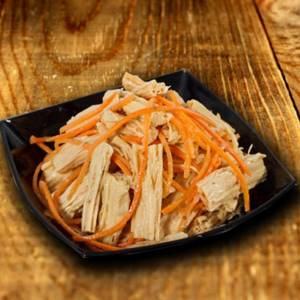
Fuzhu has a fairly high nutritional value and low calorie content
Advice! Soy protein, of course, cannot replace everything that meat gives people. That is why you should not rely only on its beneficial properties. Look for more foods with the right ingredients when planning your vegetarian menu.
Calorie content and chemical composition
Fuzhu is a fairly high-calorie food item. There are 390 kcal per 100 grams of product. In addition, it contains 42 g of protein, 19 g of fat and 12 g of carbohydrates.
The ingredient also contains the following chemical components:
- vitamins: A, B1, B2, B5, B6, B9, B12, C and PP;
- iron;
- potassium;
- calcium;
- magnesium;
- manganese;
- copper;
- sodium;
- selenium;
- phosphorus;
- zinc.
The product is filled with phytohormones, amino acids and soft dietary fiber, which provide great nutritional value for the body. Important! Soy is free of cholesterol and lactose, making this ingredient very healthy to consume.
How to store at home
To be honest, nothing is best. That is, the ideal option for a young mother who cares about healthy eating is to prepare the product immediately after purchasing it. Unfortunately, in the rhythm in which we live, this task often turns out to be unrealistic, so if you buy a vegetable “in reserve,” be sure to store it in the refrigerator, on a shelf intended for vegetables, but preferably separately from other neighbors. Before storing asparagus in the refrigerator, wrap the stems in a towel, perhaps a paper towel.
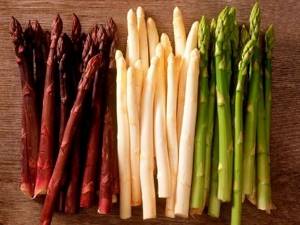
If you are a fan of asparagus, if you want to please yourself for several weeks or even months, and you don’t see such a product in your stores every day, asparagus, like most other vegetables, can be quickly frozen and stored in this form. True, for better results, experts recommend freezing not raw asparagus, but pre-boiled asparagus.
Important! The shelf life of asparagus stalks is very short, no more than a few days. At the same time, keep in mind that the white or green stems also did not appear on the supermarket shelf at the same moment as they were cut, so be sure to make the appropriate adjustment for yourself!
If you are a fan of asparagus, if you want to please yourself for several weeks or even months, and you don’t see such a product in your stores every day, asparagus, like most other vegetables, can be quickly frozen and stored in this form.
True, for better results, experts recommend freezing not raw asparagus, but pre-boiled asparagus. The directions for its further use, of course, are somewhat limited, and from thawed asparagus you will no longer get the range of dishes that fresh asparagus allows you to prepare.
Did you know? The ancient Greeks were very familiar with asparagus, but they could not eat it. According to ancient mythology, the beautiful Perigone, running away from Theseus (better known as the “positive hero” who killed the Minotaur thanks to the thread of Ariadne who loved him), who was pursuing her in a fit of unbridled passion, asked the asparagus to hide her in its stems and promised that if she were saved, she would never will no longer cause harm to the plant.
How to make soy asparagus
Let's take a closer look at what fuju is made from. This unusual ingredient is obtained from soybeans. To know how asparagus is made, you need to understand how soybeans grow. This is a bush of different sizes (from 15 cm to 2 m), has a thin stem and a two- or three-seeded bean. This component is the basis for fuzhu.
The procedure for preparing the ingredient itself is carried out in several stages:
- First, bean curd is made, from which the milk is separated.
- It is heated to 100°C using special equipment.
- Then the foam of the soy milk is skimmed off.
- It is dried and the resulting dried leaf is used dry, soaked and pickled.
When prepared, the dish has a pleasant and delicate taste. Dried fuju can be stored for about a year.
What harm
Whether soy is beneficial to the body or harmful is a matter of debate. And the point is that genetically modified organisms (GMOs) are allowed to be used in the production of soybeans.
By choosing any soy product, a person is at risk of receiving a GM product and, as a result, the risk of developing cancer.
In addition, experts do not recommend consuming soy frequently. The restriction is especially strict for children - this can lead to abnormalities during puberty.
Since soy is rich in phytoestrogens (a plant substitute for estrogen), if it is consumed frequently, men may experience signs of a female figure (enlarged breasts and abdomen). Women who abuse soy may have problems with the endocrine system.
Find out the health benefits and harms of soybeans, soybean meat, milk, butter and sauce.
Additionally, excessive fuju consumption may:
- give rise to the development of ulcers (stomach, duodenum);
- aggravate pancreatic diseases;
- cause allergic reactions.
It is not recommended to consume fuju for people with the following problems:
- predisposition to neoplasms arising due to fluctuations in estrogen;
- tendency to form kidney stones;
- cystitis;
- prostatitis;
- polyarthritis;
- worsening gastrointestinal diseases.
At the same time, with reasonable use of soy asparagus, no harmful effects are observed.
How to choose the right one when purchasing
The main criterion for the quality of any asparagus is its freshness. It is very easy to check how much time has passed since the asparagus stems were harvested. To do this, you need to carefully examine the cut. If it is wet, the product was cut recently; if it is dry, it has had time to lie in the “bins”. Unfortunately, keeping the cut moist until the asparagus is delivered to the store is not always a realistic task, but at least make sure that it is firm and does not have dark spots, since in this case the asparagus has not just sat there, but, one might say, , has been lying around.
To be on the safe side, try pressing the stem at the bottom, close to the cut point. You should see juice starting to flow out of the stem. If possible, try bending an asparagus stem. If it cracks in half with juice splattering, the product is safe to buy. If the asparagus bends, return it to the counter; since the stem has already withered, it is not worth picking up.
Fresh asparagus, where the petals do not crumble and do not spread in different directions. When squeezing a “bouquet” of asparagus stems, you should not so much hear as feel the ringing sound from the contact of juicy, dense and hard shoots.
It is clear that the color of the stem must match the type of asparagus - it can be white, purple or green, respectively. The stem of fresh asparagus does not have a brown color! Cracks on the trunk are also unacceptable.
When choosing a product, it is important to remember one more point. Asparagus can be purchased in supermarkets at any time of the year. But it is still advisable to enjoy this product during the season (however, this applies not only to asparagus, but also to any other vegetables and fruits).
Did you know? Asparagus season in Germany, where this plant is very popular and loved, even has its own name - “Spargelzeit”. It lasts about seven weeks from mid-April to June. At this time, asparagus can be found in almost every dish, including desserts. The Germans say about this: “Bis Johanni - nicht vergessen - sieben Wochen Spargel essen” or “Stich den Spargel nie nach Johanni”. Both of these sayings indicate that the asparagus season ends on June 24, the day of John the Baptist (St. Johann).
Finally, a few words about the size of the stems. Try to focus on the “golden mean”: the stems should not be too thick or very thin. The white tint of the stalks of green asparagus indicates that it is overripe; this product has a “woody” taste and should not be taken.
Also, the fact that the producer was late in harvesting is evidenced by a collapsed head of asparagus. No matter how rarely such a product appears on the shelves of your stores, you should not rush into it with your eyes closed, because for a young mother, who is responsible not only for her health, but also for the health of her baby, it is better not to eat asparagus at all than to taste poor quality!
The main criterion for the quality of any asparagus is its freshness. It is very easy to check how much time has passed since the asparagus stems were harvested. To do this, you need to carefully examine the cut. If it is wet, the product was cut recently; if it is dry, it has had time to lie in the “bins”. Unfortunately, keeping the cut moist until the asparagus is delivered to the store is not always a realistic task, but at least make sure that it is firm and does not have dark spots, since in this case the asparagus has not just sat there, but, one might say, , has been lying around.
To be on the safe side, try pressing the stem at the bottom, close to the cut point. You should see juice starting to flow out of the stem. If possible, try bending an asparagus stem. If it cracks in half with juice splattering, the product is safe to buy. If the asparagus bends, return it to the counter; since the stem has already withered, it is not worth picking up.
Fresh asparagus is shiny, its stems are smooth, and the head is collected in a neat bunch, where the petals do not scatter or spread in different directions. When squeezing a “bouquet” of asparagus stems, you should not so much hear as feel the ringing sound from the contact of juicy, dense and hard shoots.
Finally, a few words about the size of the stems. Try to focus on the “golden mean”: the stems should not be too thick or very thin. The white tint of the stalks of green asparagus indicates that it is overripe; this product has a “woody” taste and should not be taken. Also, the fact that the producer was late in harvesting is evidenced by a collapsed head of asparagus.
Mustard seasoning
Roasted vegetable lovers should really enjoy this mustard sauce for asparagus. Its recipe is a little more complicated than the previous version, since preparation requires more initial ingredients:
for 50 grams of olive oil, 2 cloves of garlic, a little ground black pepper, a teaspoon of finely chopped fresh tarragon leaves, 2 grams of sugar, salt, 2 teaspoons each of Dijon mustard and white wine vinegar.
It is better to cook this product in the microwave:
- First, in a separate bowl, combine the garlic, sugar and 2/3 of the available amount of butter.
- Microwave the mixture for 15 seconds.
- Remove the garlic from the container and use a regular knife to turn it into a paste.
- In another bowl, combine mustard, tarragon, vinegar and garlic puree.
- Add salt, prepared oil and pepper. The sauce is ready.
It can be put in the refrigerator and stored there for up to two days, so that you can use the aromatic dressing for its intended purpose at any time.
Cream sauce
Asparagus itself does not have a distinct flavor. The sauce gives it individuality and flavor. It can turn an ordinary vegetable into an exquisite and truly tasty dish. A creamy sauce for asparagus can handle this task without much difficulty. You can prepare it using the following ingredients:
for 90 grams of flour, 50 grams of butter, a tablespoon of chopped walnuts, salt, one and a half glasses of milk and cream, lemon juice and ground pepper.
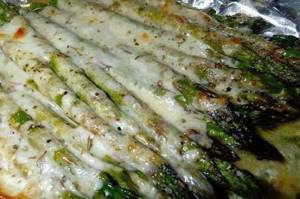
You can make this sauce as follows:
- First, heat 25 grams of oil in a frying pan, and then saute the flour in it so that it darkens a little.
- Stirring constantly, gradually pour in the milk.
- After two minutes, add cream in the same way.
- Add pepper, lemon juice, salt and immediately remove the pan from the stove.
- Whip the remaining cream as much as possible and combine it with the hot mixture.
The sauce can be considered ready. In this case, it is used for baking. Therefore, boiled asparagus should be placed on a baking sheet, pour the prepared mixture over it, and put the remaining butter on top, cutting it into several pieces. The products should be placed in the oven for 15 minutes, preheating it to 220 degrees. After this, all that remains to do is sprinkle the hot asparagus in the creamy sauce with nuts. And those who don't like them can use greens.
The benefits and harms of soy asparagus
This product is popular among vegetarians because it is made from soybeans. Does not contain elements of animal origin. Beneficial properties for the health of the body include the prevention of cardiovascular diseases and cancer, as well as osteoporosis.
But the pancreas does not cope well with processing this product, so it is very important not to eat it in large quantities. Let's take a closer look at whether food containing soy is beneficial for the body.
For women
Soybean asparagus contains substances that stabilize hormonal balance. Such properties make its use especially important during PMS and menopause. Fuzhu is also a preventive measure for breast cancer and is recommended for women with fibroids.
It is important to follow the dosage of asparagus in food so that a hormone imbalance does not occur in the body.
For men
Soybean asparagus is a product that contains selenium, so its consumption helps fight prostate and colon cancer.
This is especially important for men's health.
Did you know? An ancient Chinese legend says that when Emperor Qin Shihuang Di, who was looking for a way to live forever, tried fuzhu, he liked this product so much that it has since been called the elixir of immortality.
